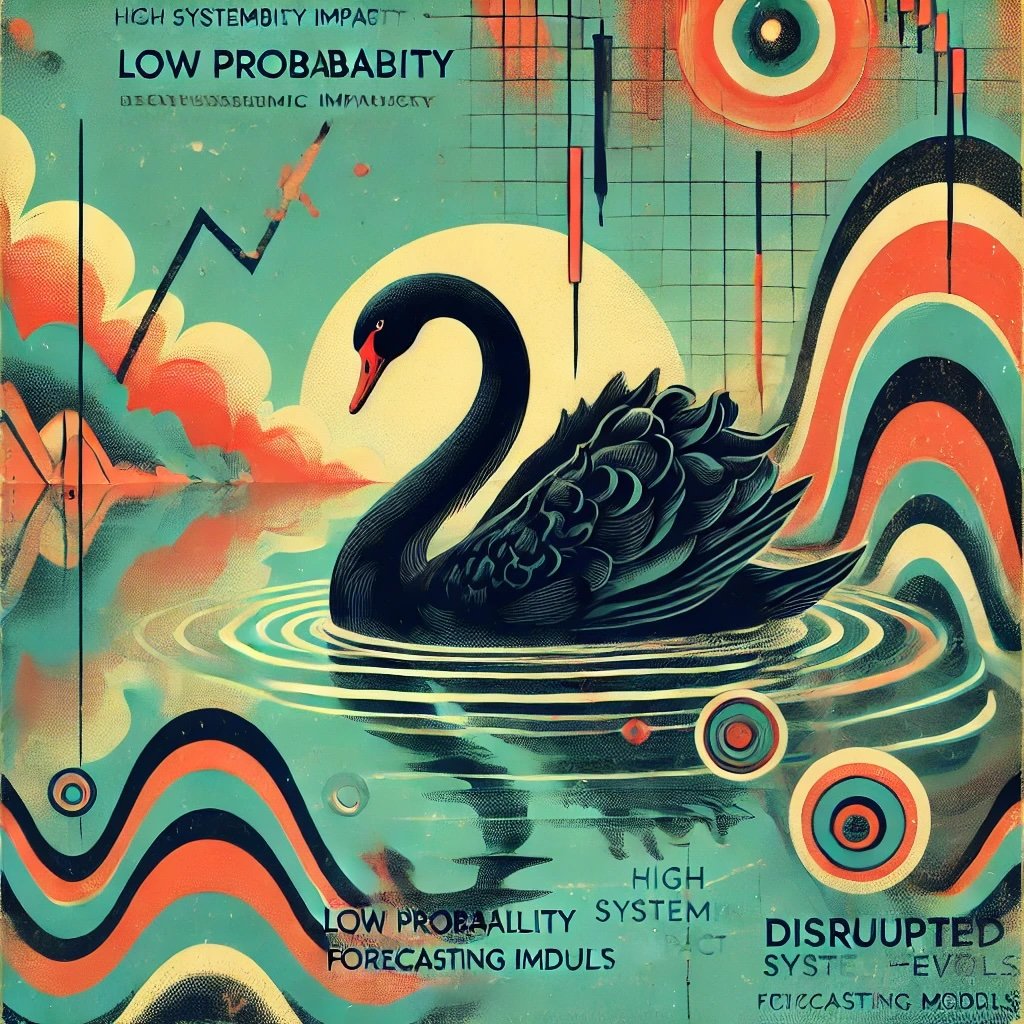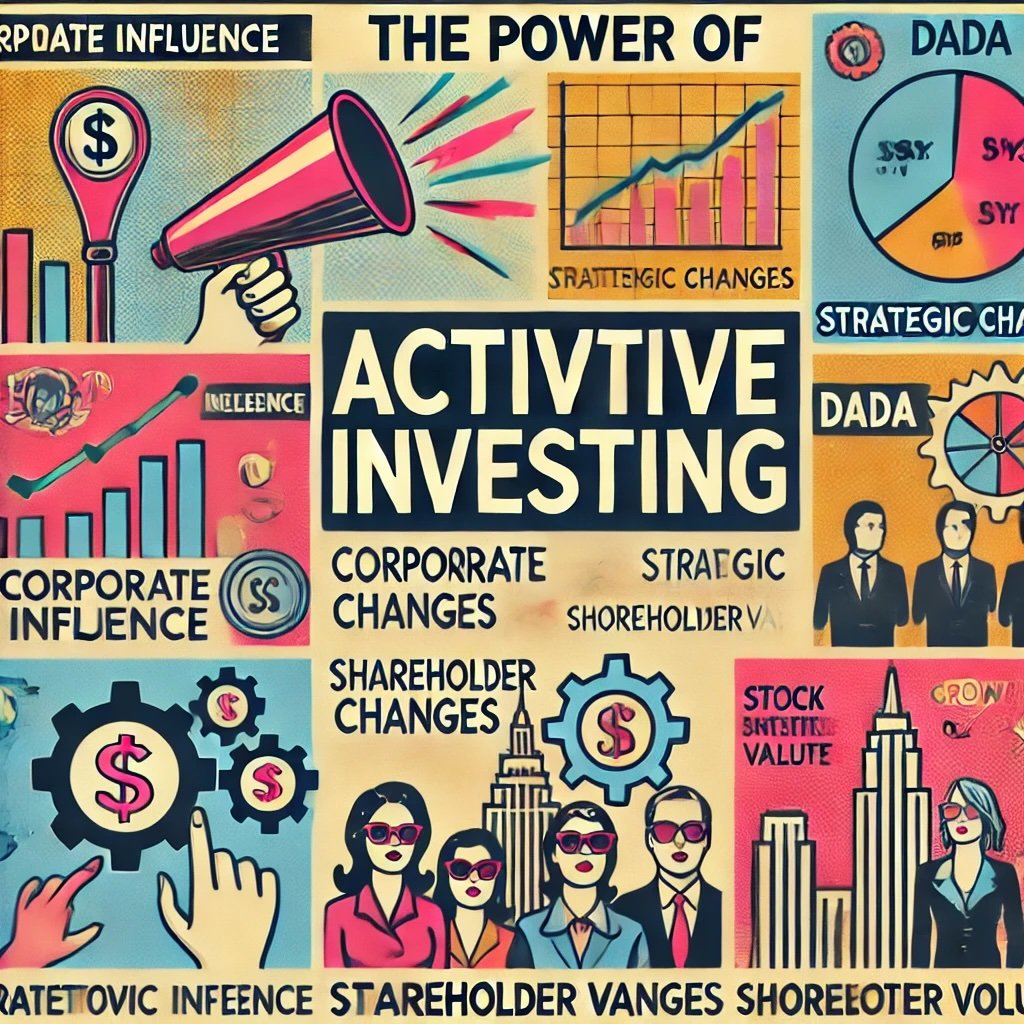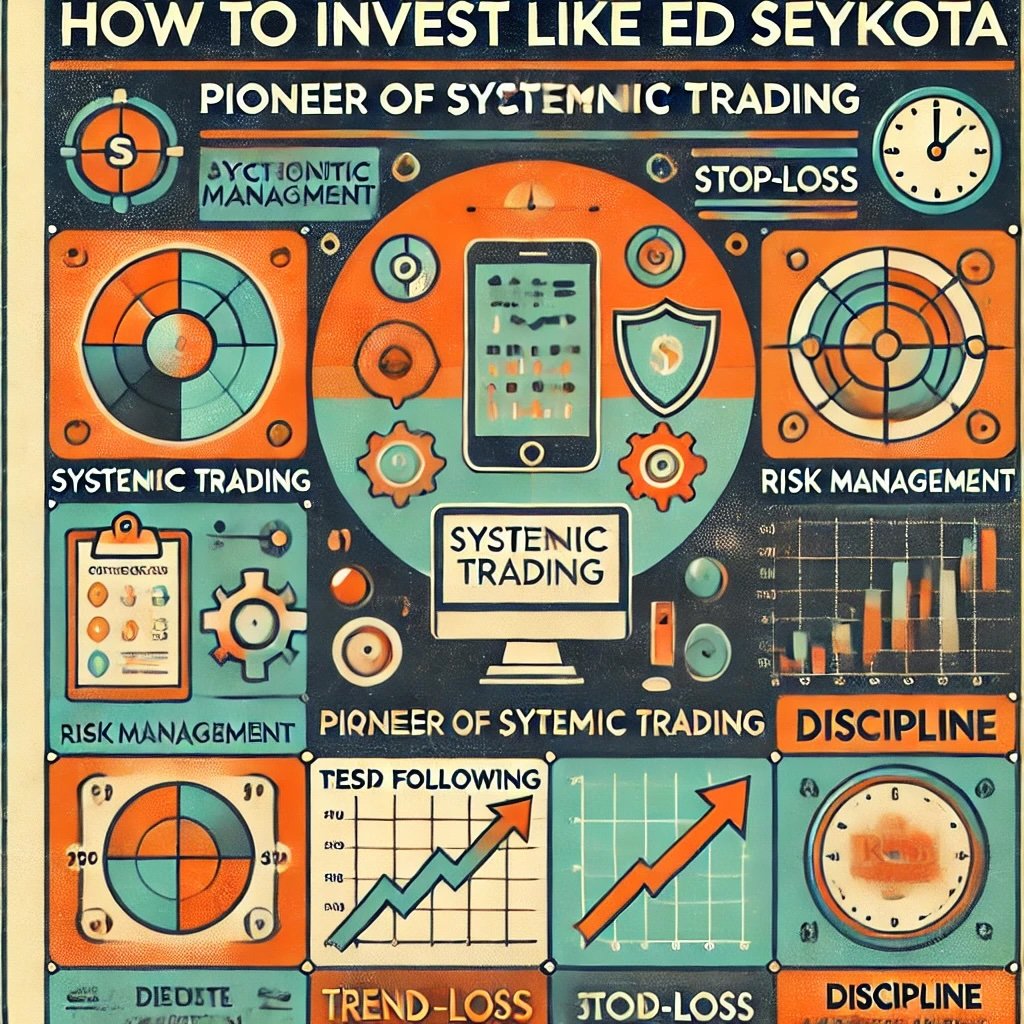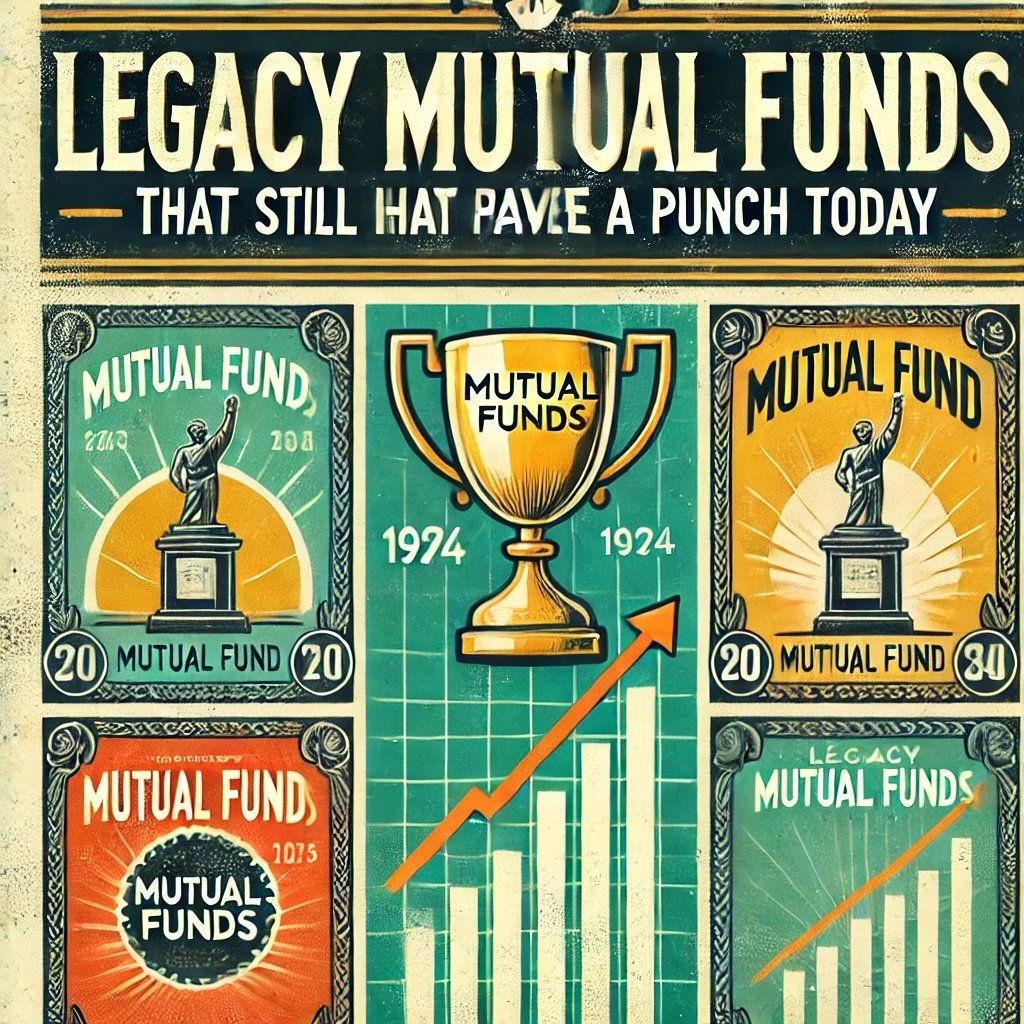Financial markets pulse with cycles of growth, corrections, and occasional crises that keep investors on their toes. Yet, from time to time, something far more dramatic and unforeseen emerges—an event so extraordinary in its scale, timing, and impact that it shatters conventional assumptions. These are the events dubbed Black Swans, a term popularized by Nassim Nicholas Taleb. By definition, a Black Swan is a rare, highly unpredictable occurrence with severe consequences and, crucially, is often deemed obvious in hindsight. Examples might include the 2008 global financial crisis, the outbreak of the COVID-19 pandemic, or the rapid collapse of major tech valuations at the peak of the dot-com bubble.

Why should investors pay special attention to these outliers? Simple: a Black Swan can wreak havoc on an unprepared portfolio, wiping out years of painstaking gains in a matter of weeks or even days. Traditional risk management tools—value-at-risk calculations or diversification heuristics—frequently fail under the intensity of such events. Correlations spike, assets once considered safe plummet, and panic-driven herd behavior exacerbates the drawdown. Meanwhile, emotional responses can drive even the most rational investor to sell prematurely, deepening losses. In short, Black Swans stand as the ultimate stress test for any investment strategy.

Survive Black Swan Events
We will explore how to build portfolios that can survive—or even capitalize on—these unpredictable upheavals. We’ll examine what actually defines a Black Swan, dissect how these incidents unfold, and highlight the profound market reactions they provoke. We’ll scrutinize typical portfolio vulnerabilities during these crises, from forced liquidations to emotional decision-making that leads to panic sales. Then we’ll pivot to solutions, diving into methods for mitigating risk, from holding cash buffers to deploying hedging strategies like options or inverse ETFs. Throughout, we’ll underscore the importance of focusing on resilience over prediction because, in the face of a Black Swan, the ability to endure outstrips any fleeting advantage from trying to foresee the unforeseeable.
An essential puzzle piece is asset allocation. Some assets maintain more stability in storms, while others crash harder. We’ll look at how blending defensive sectors, low-correlation assets, and global diversification may help. Yet, diversification alone can fail when correlations converge under crisis—an ugly reality underscored by 2008. That means we need to consider more advanced tactics like scenario analysis, stress testing, and tail-risk hedging. Additionally, we’ll discuss the subtle interplay of discipline and behavior, as psychological fortitude often spells the difference between an investor who persists through a meltdown and one who bows out at the worst moment.
Our ultimate goal? To equip you with a framework. Black Swans are by nature unpredictable, so trying to guess their exact shape or timing is mostly futile. Instead, focusing on constructing robust, flexible portfolios ensures you’re not blindsided when the extraordinary does occur. No single technique is infallible, but a mosaic of thoughtful practices—like prudent diversification, consistent rebalancing, maintaining liquidity, and psychologically committing to ride out volatility—can reduce the odds of catastrophic ruin.

Understanding Black Swan Events
Definition and Characteristics
The phrase “Black Swan event” emerges from a time when Europeans believed all swans were white, only to be proven wrong upon discovering black swans in Australia. By analogy, Black Swan events are occurrences we consider impossible or nearly unimaginable—until reality forces us to acknowledge their existence. Nassim Nicholas Taleb popularized this concept to highlight that not everything is predictable by standard statistical means. The term applies to incidents that are:
- Rare: Their probability is extremely low within conventional models.
- Unpredictable: Traditional forecasting methods struggle to foresee their timing or nature.
- High Impact: They inflict severe, often systemic, repercussions on economies, markets, or societies.
- Retrospective Rationalization: After they happen, people attempt to rationalize them as “obvious,” rewriting narratives to explain why it was bound to occur.
Concrete examples include the 2008 financial crisis, triggered by subprime mortgage collapses and the subsequent freeze of global credit markets. Another is the COVID-19 pandemic, which hammered supply chains and triggered unprecedented lockdowns. The dot-com bubble meltdown in 2000–2002 also qualifies, given how swiftly investor euphoria around internet stocks transformed into disillusion and massive losses.

Why They’re Hard to Predict
Black Swans defy conventional forecasting because they exist in the extreme tails of probability distributions. Most financial models revolve around normal distributions or assumptions of “typical” behavior. For instance, many institutions rely on value-at-risk (VaR) computations that measure potential losses under “normal” market conditions. But Black Swans dwell outside these norms, meaning the standard deviations or historical correlations used in such models fail to capture the outsized effects of a true crisis.
Moreover, cognitive biases—like recency bias and confirmation bias—incline people to expect the future to look like the recent past. If an event has never happened in our living memory, we’re prone to discount the possibility. That complacency sets the stage for a sudden shock. For instance, in the years preceding the 2008 meltdown, many believed U.S. housing prices could only go up, ignoring that no asset class remains perpetually upward-bound.
Implications for Investors
When a Black Swan hits, markets tend to plunge in a wave of panic. Liquidity can dry up, forcing a wide range of investors—hedge funds, banks, retail traders—to sell assets rapidly, even at fire-sale prices, just to meet margin calls or preserve capital. As fear spreads, what used to be loosely correlated assets may align in their downward spiral. That’s how even “diversified” portfolios can see steep losses, as correlations rise toward 1.0 in a crisis.
For long-term investors, the immediate damage might be severe, but the real question is resilience. Will you be forced to sell at rock-bottom prices because your liquidity is too tight? Will you succumb to emotional selling, locking in losses just before the market rebounds? Understanding Black Swans is partly about building a portfolio that can withstand abrupt shocks. Another dimension is psychological preparedness—recognizing that rare, catastrophic events do occur, so you’re less likely to react purely on fear.

The Impact of Black Swan Events on Portfolios
When a Black Swan strikes, it doesn’t simply knock one sector or asset class. Instead, it can trigger widespread disruption, akin to a chain reaction. Portfolios that once appeared stable and diversified may suddenly confront synchronized losses. To appreciate why these events can be so ruinous, we need to unpack how markets respond in the acute phase of crisis and how investor behavior often amplifies the damage.
Market Reactions
The hallmark reaction to a Black Swan is panic selling. As negative headlines proliferate, investors scramble for safe havens, typically cash or highly liquid government bonds. Equities and riskier credits can nosedive as selling pressure cascades. Such a crush of sell orders can degrade market liquidity further, leading to widened bid-ask spreads—meaning you might receive significantly worse prices than you’d expect under normal conditions. In an extreme meltdown, even ordinarily liquid securities can become difficult to unload without incurring big losses.
Simultaneously, margin calls intensify the rush to sell. Hedge funds or leveraged traders forced to meet margin requirements may dump assets indiscriminately, accelerating the downward spiral. This phenomenon was vividly seen in the 2008 financial crisis, where forced deleveraging destroyed billions in stock value within weeks.
Asset Correlations
One lesson hammered home by crises like 2008 and COVID-19 is that asset correlations spike during severe turmoil. Under typical circumstances, your portfolio might contain a blend of equities, corporate bonds, real estate, or commodities, counting on the idea that not everything falls at once. However, in a genuine crisis, fear can unify selling across the board, with investors frantically liquidating anything that’s not pinned down.
Why does this happen? Partly because many institutions share the same risk metrics, so they bail out simultaneously. Another reason is that in dire situations, the appetite for any form of risk vanishes, compressing diversification benefits. Equities, corporate bonds, and high-yield instruments all get hammered in tandem, leaving only top-tier government debt (and sometimes gold or certain currencies) as relative oases of stability. This correlation spike can blindside those who believed they had balanced their holdings.
Psychological Impacts
Human emotion typically amplifies a crisis. As markets plummet, fear becomes the dominant driver: investors might recall past financial calamities and panic-sell to limit further losses. Even rational actors can succumb to groupthink, especially if they rely on ephemeral signals like day-to-day price moves or social media commentary. This phenomenon can pressure even the calmest individuals into second-guessing their long-term strategies.
On the flip side, denial can also be damaging. Some refuse to acknowledge the severity of the situation, hesitating to make timely adjustments or raise necessary liquidity. By the time they act, it might be too late, resulting in more substantial losses or missed opportunities for bargains that appear once the dust settles.

Strategies to Mitigate Risk from Black Swan Events
Faced with the sobering reality of Black Swan threats, many investors wonder if there’s any feasible way to protect themselves. While you can’t foresee the exact nature or timing of these rare catastrophes, you can build resilience into your portfolio. Below are key strategies that reorient focus from trying to predict the unpredictable to fostering a robust, flexible approach.
Emphasizing Resilience Over Prediction
No crystal ball can reliably pinpoint an imminent Black Swan. Traditional forecasting models flounder under these extreme outliers. Hence, the overarching principle is to accept uncertainty and shift your aim from “spotting the meltdown” to “surviving whatever meltdown occurs.” This shift requires you to evaluate portfolio components not merely for returns but also for how they fare under severe stress. You become less obsessed with optimizing for normal conditions and more concerned about how you’ll endure when normalcy shatters.
For instance, an investor might pass on high-flying stocks that have soared during stable times if they exhibit vulnerability in a possible crisis scenario. Or you might reduce leverage to avoid forced selling should asset prices collapse. These choices sometimes lead to “underperformance” in calm markets but pay off handsomely if a Black Swan hits.
Holding a Cash Buffer
While it might seem old-fashioned, cash is a stabilizing asset in times of panic. True, it earns minimal returns in low-interest environments, but the liquidity can be invaluable. When everything else plummets, having a cash cushion spares you from selling quality positions at fire-sale prices to cover short-term obligations. It also positions you to scoop up bargains from distressed sellers forced to unload. That’s why many seasoned investors hold a certain percentage of their portfolio in cash or near-cash instruments like short-term Treasury bills, even if it marginally drags down returns in normal times.
Buffett’s approach at Berkshire Hathaway epitomizes this principle: he famously keeps billions in cash equivalents, ready to deploy swiftly when extraordinary opportunities surface in a downturn.
Hedging Strategies
Hedging can act as a safety net against sudden market dislocations. Some popular mechanisms include:
- Options: Buying put options on major indexes or key holdings can limit downside if a meltdown occurs. Though they require paying premiums, in a real crisis, they can yield significant payoffs.
- Inverse ETFs: These funds rise in value when the underlying index falls. They’re short-term instruments often used to hedge specific periods of heightened volatility. Over the long run, inverse ETFs can lose value due to daily rebalancing.
- Commodities: At times, commodities like gold serve as partial hedges, though their reliability as crisis hedges can fluctuate.
Nevertheless, hedging demands careful calibration. Over-hedging can severely cap your upside, and each hedge typically comes at a cost (fees, time decay, or negative carry). So it’s essential to weigh whether you want a permanent hedging layer (like a small put option position year-round) or a dynamic approach that expands hedges when storm clouds appear.
Scenario Analysis and Stress Testing
Scenario analysis means envisioning hypothetical calamities—10% interest rate spikes, 40% equity plunges, or pandemic-like shutdowns—and modeling your portfolio’s reaction. By stress-testing allocations, you can detect vulnerabilities. Perhaps you discover that if corporate spreads widen drastically, your heavy corporate bond allocation might tank more than you assumed. Or that your real estate holdings could face liquidity lockups in a property crisis.
Regular stress testing helps refine your risk exposures. You might decide to slightly cut your allocation to a certain sector or buy specific hedges once you see how badly your portfolio would be hammered by a realistic worst-case scenario. The key is to conduct these analyses systematically, not once every five years, but periodically and with updated data.

Asset Allocation for Black Swan Resilience
Many investors treat asset allocation like a mechanical decision: some percentage in equities, some in bonds, maybe a slice of real estate. But in a world where Black Swans lurk, you can’t rely solely on the usual routines. Instead, you need to deliberately shape your allocation to withstand the worst-case scenarios. This section delves into techniques that adapt your portfolio to these improbable but devastating events.
Diversifying Beyond Traditional Assets
Equities and bonds dominate many portfolios, especially under typical 60/40 or 70/30 blends. While that’s a time-tested approach, in a harsh meltdown, these two classes can still move in tandem if confidence in the entire financial system falters. That’s why adding alternative investments can help. For instance:
- Real Estate: Physical properties or REITs can provide some inflation hedging and steady rental income, though they’re not immune to liquidity issues.
- Gold and Precious Metals: Historically perceived as a hedge against both inflation and systemic collapses, though performance can fluctuate.
- Commodities: Such as oil or agricultural products, can show uncorrelated moves, but they can also be volatile.
- Private Equity or Private Debt: Potentially less correlated with public market swings—but also less liquid.
While these alternatives aren’t guaranteed to thrive in every crisis, they broaden your palette. Different crises can hammer different sectors. By not solely relying on the public equity-bond axis, you reduce the odds that everything falls apart simultaneously.
The Role of Low-Correlation Assets
At the crux of resilience is low correlation. If you dig deeper, certain assets or strategies consistently show weaker ties to standard equities. High-grade government bonds—particularly U.S. Treasuries—sometimes rally in flight-to-safety moments. So do certain currency plays, like the U.S. dollar or Swiss franc. Meanwhile, managed futures or global macro strategies that can go long or short on various futures might profit from market turmoil.
When you incorporate these low-correlation elements, you’re essentially embedding “shock absorbers.” Even if your main equity holdings slump, these other positions might hold steady or rise, thus stabilizing overall returns. However, note that correlation patterns can shift under extreme stress, so diligence is still needed.
Defensive Sectors and Stocks
Not all equities behave the same way in a crisis. Some sectors, like utilities, healthcare, or consumer staples, are often labeled “defensive.” Their revenue streams aren’t as cyclical, meaning people still need electricity, medication, and basic goods regardless of economic turmoil. Historically, these stocks might hold up better during a meltdown, although they aren’t bulletproof. For instance, a truly global catastrophe can still weigh on corporate earnings across the board. Nonetheless, tilting part of your equity portfolio toward these defensive sectors can curtail drawdowns.
Additionally, certain dividend-paying blue chips with strong balance sheets might offer a bit more stability. While their share prices can slip, stable dividends provide a cushion of income, and historically, high-dividend stocks have fared marginally better in downturns.
Tail Risk Hedging
For those deeply committed to equity exposure but unwilling to endure huge drawdowns, tail risk hedging strategies become relevant. Some specialized funds or managers purchase long-dated out-of-the-money put options or other derivative structures that pay off if markets plummet beyond a certain threshold. This approach can be pricey—like an insurance premium—and might drag on returns in normal or bullish conditions. But in a meltdown, such hedges can offset large portions of losses, providing liquidity and capital at the exact moment you might want to buy undervalued assets.
That said, you need to calibrate the scale of such hedges carefully. Overhedging can turn you into a near-perpetual doomsayer, eroding performance if crises remain infrequent. It’s a delicate dance: finding the sweet spot where your portfolio is robust enough but not weighed down by excessive insurance costs.

The Role of Diversification and Rebalancing
Diversification and rebalancing are staple concepts in portfolio management. They form the bedrock of many “set it and forget it” strategies. But Black Swan events put these theories to a brutal test, sometimes revealing weaknesses when extreme correlations or drastic sell-offs come into play. So how do we refine our approach to these foundational ideas in a climate of potential Black Swans?
Why Diversification Often Fails During Black Swan Events
Most investing textbooks extol the virtues of diversification. Spread out your bets across asset classes, countries, and sectors, the logic goes, and you reduce unsystematic risk. Trouble is, Black Swan crises usually trigger systemic upheaval that raises correlations across the board. Equities, corporate bonds, and even some alternative assets might sink in unison when everyone scrambles for safety. The meltdown of 2008 illustrated that holdings thought uncorrelated—like AAA mortgage-backed securities—could still plummet because the underlying system was entangled in complex ways.
One reason for this correlation spike is “liquidity-driven contagion.” Investors, in dire need of cash, might sell anything that’s sellable, forcing down prices in seemingly unrelated markets. Another reason is the universal panic factor—fear can override fundamental distinctions among assets. This phenomenon means your carefully constructed diversification plan can still suffer major losses if it relies on correlation assumptions that vanish under crisis conditions.
Building True Diversification
Instead of throwing up your hands, the lesson is to deepen or broaden your diversification. If your portfolio only includes U.S. stocks, some corporate bonds, and perhaps a small slice of international equities, that might be insufficient. True diversification might involve:
- Geographic Spreads: Emerging market debt, Asia-Pacific equities, or European government bonds. Though still not bulletproof, these can offset local shocks.
- Asset Class Variety: Incorporating real assets like farmland, infrastructure, or certain hedge fund strategies with historically low correlation to mainstream markets.
- Long/Short or Absolute Return Funds: These strategies aim for positive returns regardless of the market’s direction, though success rates vary widely among managers.
- Crypto or Digital Assets?: A more controversial angle, as cryptos sometimes correlate with equities under stress, but some see them as potential hedges.
Even with these expansions, you must test them. Running scenario analyses that simulate 30% equity crashes or interest rate surges can illustrate if your “diverse” holdings truly stand independent or if correlation creeps up in crisis conditions.
Rebalancing Strategies
Rebalancing typically involves returning your portfolio to target allocations whenever they drift—say, your 60/40 stock-bond mix becomes 70/30 after a stock rally. The logic is that you sell winners high and buy losers low, preserving your desired risk profile. Under normal conditions, rebalancing fosters discipline. However, Black Swan events can cause violent, fast reallocation that challenges standard monthly or quarterly rebalancing schedules.
Some solutions:
- Threshold-Based Rebalancing: Instead of time-based intervals, you rebalance once an asset class deviates a certain percentage from its target. This ensures you respond quickly if a meltdown or spike tilts your allocation drastically.
- Gradual Rebalancing: Rather than rebalancing all at once in a panic, you might do partial moves. For instance, you could shift 1-2% increments daily until targets are restored. This approach smooths out potentially poor timing during extreme volatility.
- Opportunistic Rebalancing: Some wait for “bargain basement” conditions in oversold assets. This approach gambles on timing, which can be risky. But if you’re well-prepared (say, holding a cash buffer), you can deploy capital when valuations nosedive.
Learning from History
Looking back at major crises, certain funds or strategies that methodically rebalanced near market bottoms reaped outsize gains in the recovery phase. After the 2008 crash, investors who had the liquidity and discipline to buy deeply discounted equities or corporate debt saw handsome returns. Similarly, those who rebalanced during the initial COVID-19 sell-off in March 2020 might have reaped strong gains over the following months as markets rebounded.
What separates these success stories from cautionary tales is structure and fortitude. They had rebalancing rules in place, clarity on their risk thresholds, and psychological readiness to act against the prevailing gloom. This underscores the synergy between diversification, rebalancing, and emotional discipline in forging a robust stance against Black Swans.

Lessons from Past Black Swan Events
In finance, few teachers are as effective as historical crises. Black Swan events, with their staggering effects on economies, serve as case studies on both the fragility and adaptability of investment strategies. By revisiting episodes like the 2008 financial crisis, the COVID-19 crash, and earlier catastrophes, we distill fundamental lessons about how to cope with—and potentially capitalize on—severe unpredictability.
Insights from the 2008 Financial Crisis
The 2008 meltdown stands as a prime modern example of systemic failure. Triggered by subprime mortgage exposures, the crisis proved that sophisticated financial engineering (like mortgage-backed securities and collateralized debt obligations) could unravel if underlying fundamentals—credit quality, liquidity—are compromised. For many investors, the crisis hammered home a few points:
- Hidden Leverage: Hedge funds and even large institutions were more leveraged than the public realized, forcing massive liquidations once asset prices dipped, magnifying losses.
- Systemic Correlations: As panic spread, assets that historically didn’t correlate began moving in tandem, undercutting standard diversification.
- Liquidity Matters: Entities lacking enough cash or short-term equivalents faced “margin calls,” scrambling to raise funds by selling assets into a collapsing market.
Portfolio-wise, those who maintained some uncorrelated havens—like high-quality government bonds or gold—fared better. Also, a disciplined rebalancing approach let investors buy equities cheaply near the bottom and benefit from subsequent rebounds.
COVID-19 Market Crash
When the COVID-19 pandemic forced global lockdowns in early 2020, markets collapsed at an unprecedented speed. Within weeks, the S&P 500 plummeted by over 30%. Yet, some assets, like technology stocks or e-commerce players, rebounded incredibly fast once government stimulus and central bank interventions kicked in.
Key lessons:
- Rapid Policy Response: Central banks slashed rates and unleashed quantitative easing. These measures can drastically shape market trajectories, so ignoring policy dimensions is a mistake.
- Behavioral Volatility: The sheer panic selling of March 2020 swiftly reversed into a bullish mania, underscoring how quickly sentiment can pivot. Investors who sold at the nadir crystallized losses. Meanwhile, those who maintained discipline and rebalanced captured gains in the dramatic rebound.
- Sectoral Shifts: Not all industries were equally harmed. Travel, hospitality, and energy suffered heavily; tech, healthcare, and remote-services soared. This sector-based performance disparity highlights the necessity of sector diversification and the potential for contrarian plays if you identify undervalued industries poised for recovery.
Other Historical Examples
- Dot-Com Crash (2000-2002): Overinflated tech valuations collapsed, vaporizing trillions in market cap. Many once-hot internet stocks vanished. Diversification—particularly weighting less tech-centric sectors—proved critical. Also, investors who insisted on fundamental metrics, not speculation, avoided the worst.
- Asian Financial Crisis (1997): Triggered by currency devaluations in Thailand, it spread across East Asia, exemplifying how one region’s meltdown can ignite global contagion. Portfolios heavy in emerging markets got slammed. That event reinforced the concept of reexamining foreign currency risk and the precariousness of short-term external debt.
Each crisis was unique in its catalysts—be they real estate, technology hype, or currency pegging failures. Yet, they share structural echoes: leveraged players topple fastest, correlations skyrocket, and emotional waves can lead to mass exodus or sudden mania.
Takeaways for Future Preparedness
Examining these episodes yields crucial takeaways:
- Robust Due Diligence: Don’t assume a stable environment. Evaluate business models and counterparties with an eye on resilience if liquidity vanishes or consumer demand crashes.
- Flexible Liquidity: As seen repeatedly, having enough liquid funds can transform a crisis from an existential threat into a chance to buy undervalued assets.
- Avoid Overconcentration: Bubbles can inflate in any sector—tech, housing, or beyond. Overexposure to a single hot area can be catastrophic if it busts.
- Emotional Discipline: In each meltdown, those who sold impulsively near the bottom locked in permanent losses, whereas calmer or contrarian approaches occasionally reaped large rebound gains.
- Stay Watchful of Policy: Central banks’ rate moves or government stimuli significantly shape market recoveries. While you can’t predict exactly how or when, ignoring such influences can hamper your strategic response.
In essence, each meltdown reveals that even thorough analyses can falter under extreme stress. Yet, the best defense is an adaptable, well-balanced portfolio, backed by clear risk controls and the emotional fortitude to avoid panic exits.
Black Swan Events: 12-Question FAQ for Building Shock-Resilient Portfolios
What exactly is a Black Swan event?
A Black Swan is a rare, highly unpredictable event with severe market impact that seems “obvious” only in hindsight. Think systemic crises (2008 GFC), abrupt global shocks (COVID-19), or rapid unwinds of crowded trades. They sit in the tails—outside assumptions used by most risk models.
Why do traditional risk tools fail during Black Swans?
Many tools (e.g., VaR) assume normal distributions and stable correlations. In panics, correlations spike, liquidity disappears, and outcomes live in the fat tails, so model-based estimates understate real-world drawdowns and the speed of losses.
How can I build a portfolio that survives the unexpected?
Emphasize resilience over prediction: diversify beyond stocks/bonds, include crisis-offsetting sleeves (e.g., long duration Treasuries, managed futures, tail hedges), hold a cash buffer, limit leverage, set rules for rebalancing, and pre-commit to behavior under stress.
What role does cash play in Black Swan readiness?
Cash (and T-Bills) buys time and options. It prevents forced selling into illiquidity, funds living expenses/withdrawals, and provides dry powder to buy dislocations. The trade-off is a carry cost during normal markets.
Which assets or strategies have historically helped in major selloffs?
Long duration sovereign bonds (flight-to-quality episodes), managed futures/trend-following (ability to go short rates/equities/FX/commodities), certain macro/relative-value strategies, and occasionally gold or the USD. None are perfect every time, so mix rather than rely on one.
What is tail-risk hedging and when is it worth it?
Tail hedging uses instruments like long-dated, out-of-the-money puts or convex structures designed to pay off in deep crashes. It’s like insurance: a drag most years, potentially lifesaving in crises. Sizing is key—too small won’t matter; too large erodes long-run returns.
Why does diversification “break” when you need it most?
During funding stress and de-risking waves, investors sell what they can—raising correlations toward 1.0 across risky assets. True diversification requires exposures that behave differently under stress (policy-sensitive duration, trend, macro, high-quality collateral), not just more tickers.
How should I think about rebalancing around crashes?
Use rules you’ll follow: threshold-based (e.g., rebalance when an asset drifts ±20% from target), staged re-entries (ladder buys), and pre-defined funding sources (cash/T-Bills). Avoid ad-hoc timing. Document in an IPS to reduce emotion.
How big should the cash/defensive sleeve be?
Depends on objectives, spending needs, and risk tolerance. As a rule of thumb, hold 6–24 months of spending in cash/T-Bills for retirees or distribution portfolios; accumulators may hold less but still keep a liquidity buffer for opportunity and ballast.
Can options or inverse ETFs help a DIY investor?
Yes, with caveats. Protective puts cap downside but cost premiums; collars reduce cost by capping upside; inverse ETFs can hedge short windows but suffer from daily rebalancing decay. Use modest allocations, clear rules, and review costs/roll schedules.
How do I run practical stress tests and scenarios?
Model shocks (e.g., −35% equities, +300 bps credit spreads, −150 bps rates, USD spike, oil shock) and estimate portfolio P&L, liquidity needs, and rebalancing triggers. Check counterparty exposure, margin calls, and sequence-of-returns risk if you withdraw.
What behavioral rules keep me from panic-selling?
Pre-commit to: (1) follow the written IPS, (2) act only on scheduled reviews or rule triggers, (3) separate “need cash now” from “price is scary,” (4) use checklists before any sell, and (5) measure decisions by process quality, not short-term outcomes.
Final Thoughts
Black Swan events exemplify the adage that markets can be far more unpredictable than any textbook formula or standard risk model might suggest. They materialize seemingly out of nowhere—a global pandemic, a financial meltdown sparked by obscure subprime instruments, or a sudden crash in an overhyped tech sector—and upend the comfortable assumptions undergirding typical portfolios. The cost of ignoring such extreme possibilities can be colossal, wiping out well-established savings or years of capital growth in mere weeks.
Yet, while these events defy precise prediction, you can prepare. The overarching theme is not about forecasting but about fortifying.
A portfolio built with Black Swan resilience focuses on:
- Diversification that extends beyond superficial allocations, venturing into different asset classes, sectors, and possibly geographies.
- Rebalancing guided by triggers or thoughtful intervals, ensuring you don’t drift too far from your risk targets and that you can capitalize on panic-driven price distortions.
- Liquidity in the form of cash or equivalents, which spares you from forced sales at rock-bottom prices and positions you to buy undervalued assets if you have the resolve to act.
- Hedging measures like options, inverse ETFs, or specialized strategies that can cushion steep downturns, albeit at the cost of a slight drag on returns during normal times.
- Scenario analysis that confronts doomsday scenarios head-on, identifying portfolio weak points before disaster strikes.
No approach is flawless. Even the best-hedged portfolios can see declines, and no scenario analysis covers every contingency. But a well-structured plan, built on resilience, diversification, liquidity, hedging, and emotional steadiness, magnifies your odds of enduring in those extreme tails of probability we call Black Swans. Ultimately, while the unpredictability of such events can feel intimidating, an ounce of preparedness is worth far more than trying to guess the next meltdown’s cause or exact timing. By acknowledging that Black Swans are an ever-present possibility, you grant yourself the clarity to invest sensibly, protect your financial foundation, and carry on—no matter how wild the market’s swan dance becomes.
Important Information
Comprehensive Investment Disclaimer:
All content provided on this website (including but not limited to portfolio ideas, fund analyses, investment strategies, commentary on market conditions, and discussions regarding leverage) is strictly for educational, informational, and illustrative purposes only. The information does not constitute financial, investment, tax, accounting, or legal advice. Opinions, strategies, and ideas presented herein represent personal perspectives, are based on independent research and publicly available information, and do not necessarily reflect the views or official positions of any third-party organizations, institutions, or affiliates.
Investing in financial markets inherently carries substantial risks, including but not limited to market volatility, economic uncertainties, geopolitical developments, and liquidity risks. You must be fully aware that there is always the potential for partial or total loss of your principal investment. Additionally, the use of leverage or leveraged financial products significantly increases risk exposure by amplifying both potential gains and potential losses, and thus is not appropriate or advisable for all investors. Using leverage may result in losing more than your initial invested capital, incurring margin calls, experiencing substantial interest costs, or suffering severe financial distress.
Past performance indicators, including historical data, backtesting results, and hypothetical scenarios, should never be viewed as guarantees or reliable predictions of future performance. Any examples provided are purely hypothetical and intended only for illustration purposes. Performance benchmarks, such as market indexes mentioned on this site, are theoretical and are not directly investable. While diligent efforts are made to provide accurate and current information, “Picture Perfect Portfolios” does not warrant, represent, or guarantee the accuracy, completeness, or timeliness of any information provided. Errors, inaccuracies, or outdated information may exist.
Users of this website are strongly encouraged to independently verify all information, conduct comprehensive research and due diligence, and engage with qualified financial, investment, tax, or legal professionals before making any investment or financial decisions. The responsibility for making informed investment decisions rests entirely with the individual. “Picture Perfect Portfolios” explicitly disclaims all liability for any direct, indirect, incidental, special, consequential, or other losses or damages incurred, financial or otherwise, arising out of reliance upon, or use of, any content or information presented on this website.
By accessing, reading, and utilizing the content on this website, you expressly acknowledge, understand, accept, and agree to abide by these terms and conditions. Please consult the full and detailed disclaimer available elsewhere on this website for further clarification and additional important disclosures. Read the complete disclaimer here.




